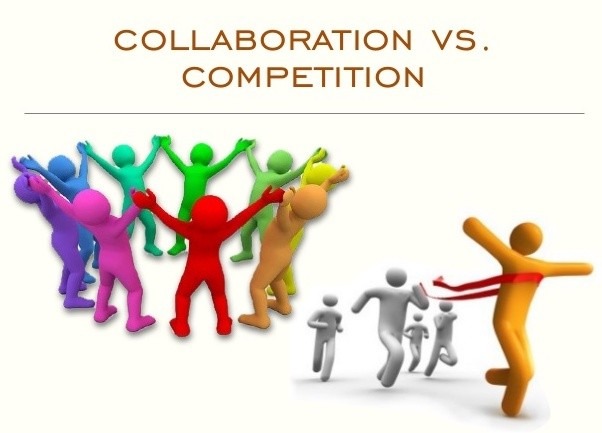
Innovation is the lifeblood of the creative industry. It’s what pushes boundaries, sets trends and transforms ideas into reality. But what truly drives innovation—collaboration or competition? This age-old debate has long been a point of contention among creatives and business leaders alike. In this blog post, we’ll explore the roles both collaboration and competition play in fueling innovation and which might have the edge in today’s fast-paced world.
The Case for Collaboration: Strength in Numbers
Collaboration is often hailed as the cornerstone of creative innovation. When minds come together, the potential for groundbreaking ideas multiplies. Collaboration allows for the sharing of diverse perspectives skills, and experiences, creating a fertile ground for innovation to thrive.
One of the most significant advantages of collaboration is the ability to leverage collective intelligence. When team members with different expertise and backgrounds work together, they bring unique insights to the table. This diversity of thought can lead to more well-rounded and innovative solutions that might not have been possible in a siloed environment.
Moreover, collaboration fosters a culture of openness and trust. When individuals feel safe to share their ideas without fear of judgment, creativity flourishes. This environment encourages risk-taking and experimentation, both of which are essential for innovation.
A prime example of successful collaboration driving innovation is the tech industry. Companies like Apple and Google have thrived by fostering a collaborative culture that encourages cross-functional teams to work together. These collaborations have led to some of the most innovative products and services in the market.

The Role of Competition: The Drive to Be the Best
While collaboration has its merits, competition also plays a crucial role in driving innovation. The desire to outdo rivals and be the best can be a powerful motivator. Competition pushes individuals and organizations to think outside the box, work harder, and strive for excellence.
In a competitive environment, the pressure to innovate is constant. Companies must continually evolve and improve their offerings to stay ahead of the curve. This relentless pursuit of better solutions often leads to significant breakthroughs that might not occur in a more collaborative, less pressured setting.
Competition can also lead to a healthy rivalry that sparks creativity. When individuals or teams compete, they’re often inspired by the work of others, leading them to come up with fresh ideas or refine existing ones. This kind of dynamic can create a cycle of innovation where each competitor’s success fuels further innovation across the industry.
The automotive industry is a prime example of competition driving innovation. The fierce rivalry between companies like Tesla, Ford, and General Motors has led to rapid advancements in electric vehicle technology, with each company striving to outdo the others in terms of performance, sustainability, and design.
Balancing Collaboration and Competition: The Sweet Spot for Innovation
So, which is better for driving innovation in the creative industry—collaboration or competition? The answer may lie in finding the right balance between the two. Both collaboration and competition have their strengths, and when combined, they can create an environment that maximizes innovation.
Collaboration should be encouraged within teams and across organizations to foster a culture of creativity and shared knowledge. At the same time, a healthy level of competition can be introduced to push individuals and teams to achieve their best work. This balance ensures that while creativity is nurtured, there’s also a drive to continually improve and innovate.
The entertainment industry provides an excellent example of this balance. While studios and production companies often collaborate on projects, they also compete for box office success, awards, and audience attention. This mix of collaboration and competition drives the industry to produce some of the most innovative and compelling content.
Conclusion: The Dual Engines of Innovation
In the creative industry, both collaboration and competition are essential drivers of innovation. Collaboration brings together diverse perspectives and fosters a culture of openness, while competition pushes individuals and organizations to strive for excellence. By finding the right balance between these two forces, the creative industry can continue to push boundaries and lead the way in innovation.
Whether you’re a creative professional, a business leader or simply someone interested in the dynamics of innovation, understanding the roles of collaboration and competition can help you navigate and thrive in the ever-evolving creative landscape.

